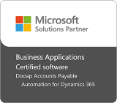Let’s face it. 2020 has been a totally unexpected and challenging year, to say the least. As we head into 2021, it’s a time to not only evaluate how we’ve faired, but also to reassess what we’ve been doing and where we should be heading from here.
While work from home mandates this year have exposed the problems of paper-based and manual AP processes – including lack of visibility, processing delays, inefficiencies and more – the good news is that it’s also made management more aware of these issues and pre-disposed to fixing them. This year many companies have implemented work arounds to keep AP operations going, which have often been cumbersome and lacking. For example, in one organization, an AP staffer drives invoices around for approval. In another, an AP practitioner meets the CFO in a parking lot to get invoices approved and checks signed. While these may be extreme cases, many organizations have been relying on emails to onboard vendors, and route invoices – a practice which is inefficient, difficult to track, and makes the organization more vulnerable to fraud.
As organizations have learned lessons this year about what hasn’t worked, what do they need to do to position themselves for greater visibility, control and efficiencies in AP in the coming year – while reducing costs? To address that question, Mark Brousseau, consultant from Brousseau and Associates and our own Karen Wainwright, Channel Account Manager, recently conducted a webinar on AP best practices, “Not a Single Invoice Astray: 5 AP Best Practices.”
Here are 5 best practices in accounts payables processes to focus on to gain greater value from AP in your organization:
-
Standardize invoice formats:
Have a conversation with suppliers about the information that you need on your invoices in order to process them quickly, measure KPIs and run reports. They should be receptive to your request since invoices with incomplete or inaccurate data could delay payment, something that suppliers are particularly concerned about right now. -
Automate coding and workflow:
Manual AP processing is a huge time sink. Not only do AP practitioners spend 84% of their time on transactional processes, but department leaders spend the bulk of their time on that as well, instead of managing overall operations. In addition to freeing up their time to focus on more value-added tasks, automation enables faster and streamlined processes, improved accuracy and greater visibility. Now, with AI and machine-learning-enabled solutions, all of these benefits have increased, while human involvement has been reduced. By continually getting smarter, machine learning-enabled tech can recognize patterns in the data to provide better understanding as well as process invoices faster through automated coding, routing and more.
-
Gain insight into exceptions to reduce fraud:
Begin, or further, your AP automation journey to gain complete visibility. Automation, which creates a digital fingerprint of your invoices, provides a digital trail for audits and traceability. At the same time, it helps to identify and prevent fraud by providing visibility into exceptions and flagging irregularities. -
Go beyond the status quo to prepare for the next normal:
Take an inventory of your AP operations. What are your pain points? Consider what you want to automate, and bring together key stakeholders to consider their needs as well. Select a solutions provider based on how well they address your key needs. Plan for how you will address change management and focus first on quick, easy wins. -
Take an outcome-based approach:
Once you implement a solution, it’s important to measure your progress and look for ways to continually improve operations. Create KPIs to measure visibility into cash flow and spend, data on vendors and spend categories, and fraud.
In addition to instituting process best practices, it’s critical that organizations provide the tools AP professionals need to work effectively and productively. That not only means automating the process, but also providing mobile capabilities so AP staff and approvers can work anywhere. This is particularly important in today’s COVID-19 climate.
It’s been a tough year for many, but companies are emerging from 2020 with greater clarity into what’s working, what’s not, and what needs to be changed. Now’s the time to get your AP house in order so your workflow becomes streamlined and staff can work more effectively, no matter where they are based. And, this will enable you to provide the data and insight your organization needs to more effectively manage cash flow, reduce spend, and help prevent fraud to support its business goals for the coming year.
It was great to have Mark share his insights on AP best practices. Not only does he have a wealth of industry knowledge, insight and stats -- he's also very entertaining and lots of fun! Stay tuned for our video series with Mark coming soon...
Ready to learn more on how to get your AP house back in order?








